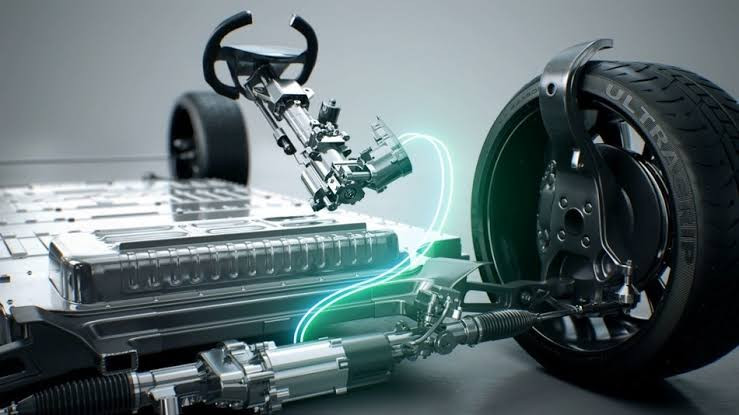For years, the rack and pinion system has been the backbone of automotive steering, providing a direct mechanical link between the steering wheel and the vehicle’s wheels. This reliable method uses a circular gear (the pinion) to move a straight bar with gear teeth (the rack), translating rotational motion into linear motion to turn the wheels.
Steer-by-wire (SbW) technology is revolutionizing this concept by eliminating the physical connection altogether. Instead, SbW systems use electronic signals to communicate the driver’s steering inputs to the wheels. This is achieved through a network of sensors, actuators, and software, ensuring that the vehicle responds accurately to the driver’s intentions.
- Sensors: Sensors on the steering wheel detect your every turn and tilt.
- Digital Signals: These signals are transmitted electronically to a control unit.
- Software Interpretation: Software interprets the signals and calculates the necessary steering adjustments.
- Electric Actuators: Electric motors (actuators) then precisely turn the wheels based on the software's commands.
The Advantages of Steer-by-Wire
- Enhanced Precision: SbW systems offer unparalleled steering accuracy, reducing the margin for error and enhancing the driving experience.
- Customizable Driving Dynamics: Drivers can tailor the steering response to their preferences or adapt it to different driving conditions, something traditional systems cannot match.
- Seamless Safety Integration: SbW is the perfect companion for advanced driver-assistance systems (ADAS), working in harmony with features like lane-keeping assist and automated emergency steering.
- Design Freedom: Without the need for a steering column, SbW opens up new possibilities for vehicle interior design, offering more space and flexibility.
Overcoming the Challenges of Steer-by-Wire
- Preserving the Feel: One of the biggest challenges is maintaining the tactile feedback that drivers are accustomed to with mechanical systems.
- Ensuring Reliability: SbW must have fail-safe redundancy systems to maintain control in the unlikely event of an electronic failure.
- Navigating Regulations: As SbW is still relatively new, there may be regulatory challenges to address before it can be widely adopted.
The Potential Dominance of Steer-by-Wire
Steer-by-wire is not just a fleeting trend; it’s a glimpse into the future of automotive design, particularly with the rise of autonomous vehicles. Innovations in haptic feedback are already addressing the challenge of providing drivers with artificial yet realistic steering sensations.
Vehicles Already Using Steer-by-Wire
While steer-by-wire (SbW) is still a relatively new technology, it's not entirely out of the realm of science fiction. Here are some examples of vehicles that have already incorporated SbW:
- Production Cars: Certain Rolls-Royce, Lotus, GMC Hummer EV, and Chevrolet Silverado EV models: These high-end electric vehicles utilize a rear-axle SbW system working in conjunction with a traditional front-wheel steering setup. This allows for independent control of the rear wheels, potentially enhancing stability and maneuverability.
- Concept Cars: Several concept vehicles from major manufacturers: Car companies have used concept cars as platforms to showcase future technologies, and SbW has featured prominently in some of these designs. These concept cars highlight the potential of SbW for improved handling, packaging flexibility, and integration with advanced driver-assistance systems.
- Racing Cars: Porsche Cayman GT4 and Mercedes-AMG GT3: These high-performance machines have successfully implemented SbW technology in competitive racing environments. The benefits of SbW in racing can include quicker steering response and the ability to fine-tune steering characteristics for optimal track performance.
It's important to note that the current implementation of SbW in production cars is often a hybrid system, combining SbW with traditional mechanical linkages for steering the front wheels. This approach offers a balance between the potential benefits of SbW and the proven reliability of mechanical systems.
Steer-by-wire represents a significant shift in automotive technology, promising to enhance the driving experience while paving the way for future innovations. While the traditional rack and pinion system may not retire completely, it’s clear that SbW has the potential to coexist and cater to different segments of the automotive market.

Comments (0)
Please login to join the discussion
Be the first to comment on this article!
Share your thoughts and start the discussion